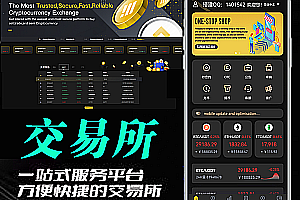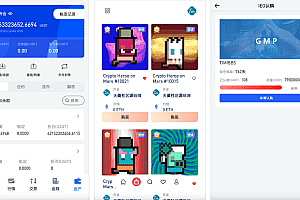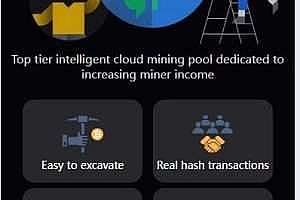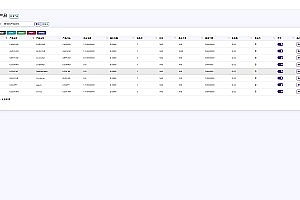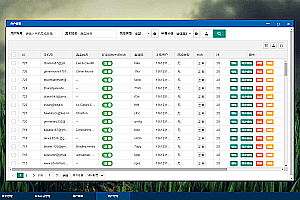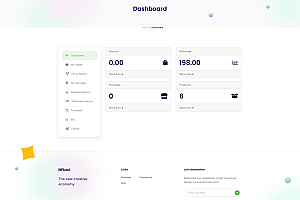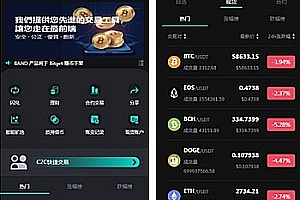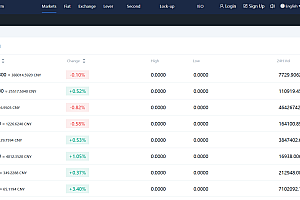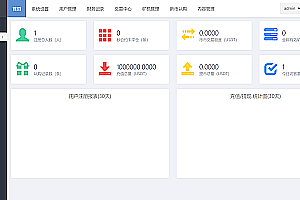Before making a purchase, you can contact customer service QQ: to view the demonstration first, or consult customer service to confirm that your needs are met before placing an order!
The complete set of source code includes: native Android app source code, native iOS app, web version, complete video building tutorial and building documentation.
Source code introduction and installation instructions:
Open source exchange, Java based exchange | BTC exchange | ETH exchange | Exchange | Trading platform | Matchmaking trading engine. This project has complete matching and trading engine source code, backend management (backend+frontend), frontend (trading page, activity page, personal center, etc.), Android APP source code, Apple APP source code, and currency wallet RPC source code. Open source projects are for learning reference only and should not be used for illegal purposes.
Features:
1. Based on memory matching engine, faster than traditional database based matching
2. Front end separation, Token based API authorization mechanism
3. Based on the SpringCloud microservice architecture, it is easier to expand
4. MySQL, MongoDB, Redis have multiple data storage methods, all for faster performance
5. Kafka publishes subscription message queues to make orders flow faster
6. Mainstream currencies have complete blockchain interfaces for integration, ready to use out of the box
7. Cold and hot wallet separation, two withdrawal methods to ensure security
8. Robot system, synchronizing market trends, maintaining depth, and preventing brick moving
9. Native App, Java and obje ctC provide native experience
10. Exchange designers provide technical support, deployment+worry free second opening
11. Support adding custom platform coins and other currencies
Usage tutorial:
Prepare a MySQL database and create a database named ‘xxxx’
Prepare Redis cache database
Prepare a Kafka streaming environment (first configure and run zookper, then configure and run Kafka)
Prepare the MongoDB database environment, create users admin and xxxx, and create the Bitrade database
Prepare Alibaba Cloud OSS (modify the areas that need to be configured in the project)
Prepare nginx and modify configuration files (optional, required for official launch)
Modify the configuration file in the framework code to prepare environment configuration parameters
Compile and generate jar executable files
Run cloud.jar (microservice registry)
Run exchange. jar (matching trading engine)
Run market.jar (Market Center, waiting for Exchange. jar to fully start)
Run ucenter. jar (User Center)
Run other modules (wallet.jar, chat.jar, otc-api.jar, etc.)
Open MySQL and import the xxxxxxx.SQL file from the SQL folder in the framework code. Note that if the trigger’s SQL reports an error, you need to add a trigger for the wallet table
Run the frontend Vue project
Run the backend Vue project
Run wallet RPC
Run the automated trading robot program (this part of the code has not been uploaded, but it does not affect)
Run the Admin project (this service does not depend on other services, so you can also run only this project and directly view the backend)
Core Function Description (User Side)
1. Registration/login/real name authentication/verification (currently only supports mobile phones, secondary development can be added via email, very simple)
2. Banner/Announcement/Help/Custom Page (Banner supports separate settings for PC and APP, and helps support various classification modes)
3. C2C trading/OTC trading (supports two modes, the platform can undertake C2C exchange in the early stage of the project, and OTC trading can be opened in the later stage)
4. Coin trading (supports limit orders, market orders, and other order modes can be added for secondary development)
5. Invite registration/promotion partners (supporting daily, weekly, and monthly ranking statistics on the number of invited promoters and commissions)
6. Innovation Laboratory (This section supports multiple functions, please provide detailed explanations. Additionally, the APP does not currently fully support this function)
6-1. Initial flash sale activity mode (such as setting a certain number of currencies for a new trading pair to be sold)
6-2. First release sharing activity mode (such as before issuing BTC/USDT trading pairs, the official offers 5 BTC for the activity, and the BTC is evenly distributed based on the amount of USDT users deposit as collateral)
6-3. Control the flash sale mode (if the price of ZZZ currency was 5 USDT before the issuance of ZZZ/USDT trading pairs, and the official issuance activity price was 0.5 USDT, then this mode can be used)
6-4. Share control and equal distribution mode (such as 6-3, just evenly distributed)
6-5. Activity mode (supporting users to pledge a certain amount of currency, with an official commitment to return a certain amount of currency every month)
7. Red envelope function (supports platform and official distribution of a certain amount of currency red envelopes, this function is suitable for user fission)
8. Basic management such as user asset management, transaction management, entrusted management, and real name management
Core Function Description (Management End)
1. Overview (view platform operation data, including transaction volume, number of registrations, recharge, etc.)
2. Member management (member information management, member real name verification, member real name management, member balance management, member recharge/frozen balance, etc.)
3. Invitation management (member invitation information, member invitation ranking management)
4. CTC management (CTC order management, flow management, acceptor management)
5. Content Management (PC Advertising Management, APP Advertising Management, Announcement Management, Help Management)
6. Financial management (recharge and withdrawal management, financial flow management, reconciliation management, currency wallet balance management)
7. Coin management (creating trading pairs, managing trading pairs, creating trading robots, setting trading robot parameters, setting market/trading engines, revoking all orders)
8. Activity Management (New Activity, Subscription, Flash Sale/Partition Management)
9. Red envelope management (platform red envelope management, user red envelope management)
10. System management (role management, department management, user management, permission management, currency management, RPC management, version management)
11. Margin management (this function was considered during the design, but was not used during actual operation)
12. OTC management (advertising management, order management, OTC currency management, surrender management, etc.)


